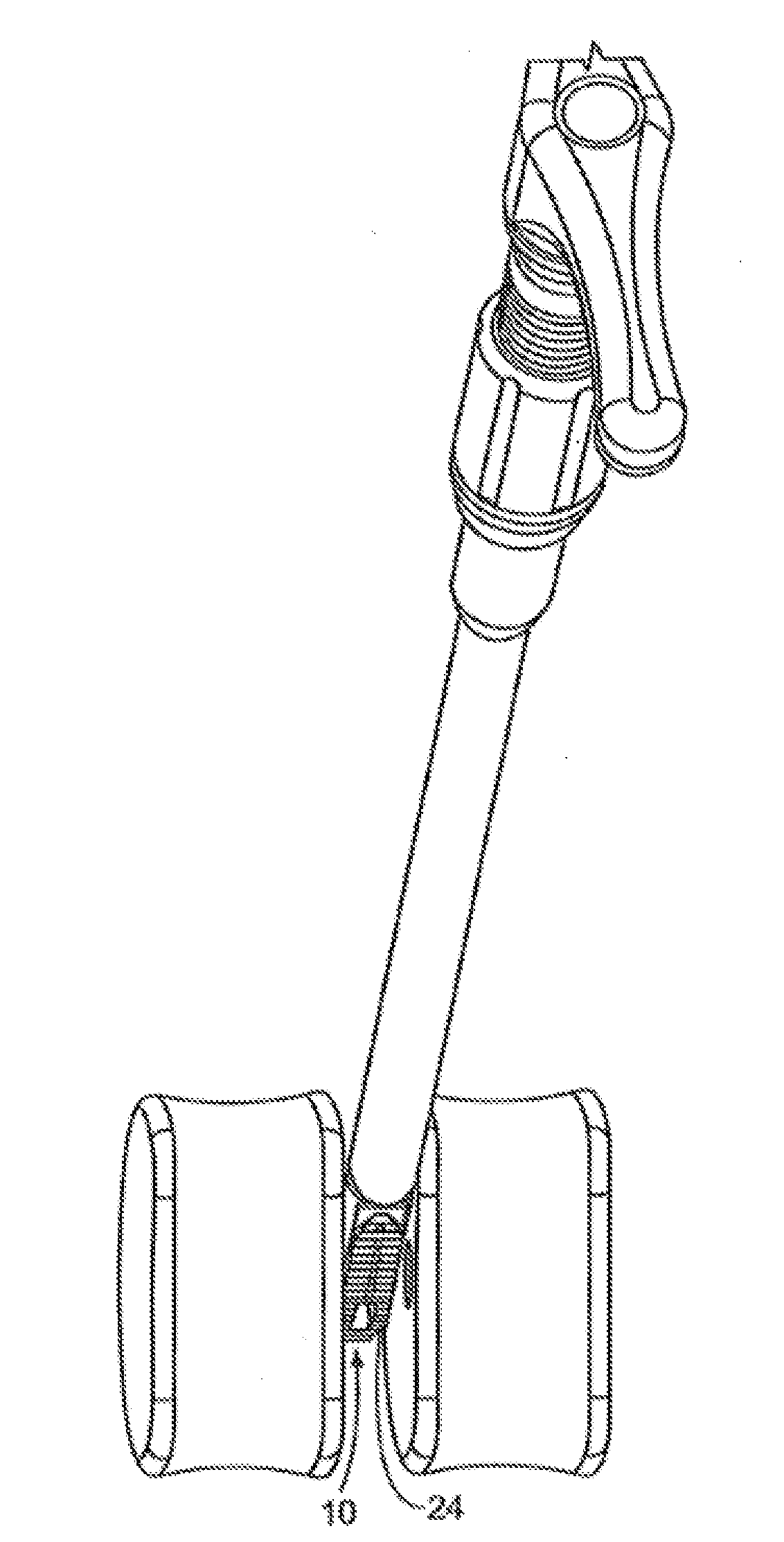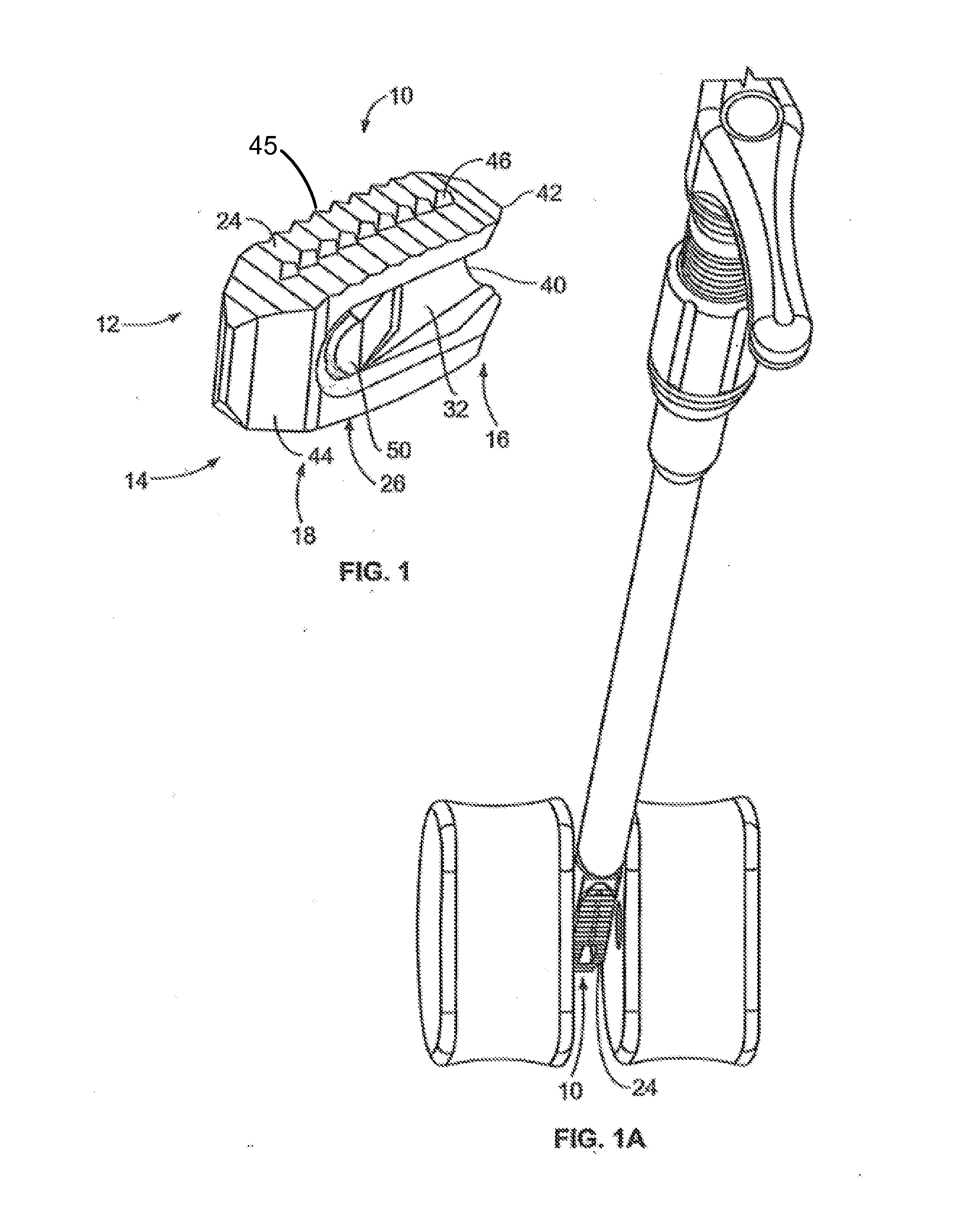Methods and Systems for Interbody Implant and Bone Graft Delivery
a technology of interbody implants and bone grafts, applied in the field of spinal implants, can solve the problems of limiting the fusion area achieved, many known procedures for spinal fusion, still more invasive than desired, and many known procedures do not provide the level of control over bone delivery and placement, etc., to achieve the effect of reducing approach related morbidity, more bone graft placement, and improving control of bone graft delivery and/or placemen
- Summary
- Abstract
- Description
- Claims
- Application Information
AI Technical Summary
Benefits of technology
Problems solved by technology
Method used
Image
Examples
Embodiment Construction
[0041]FIG. 1 illustrates a perspective view of a spinal implant, or spacer, 10; FIG. 2 illustrates a side view of the spacer 10; FIG. 3 illustrates a top view of the spacer 10; and FIG. 4 provides an end view (looking from the proximal end) of the spacer 10. The spacer 10 is sized and adapted to maintain a desired spatial relationship between adjacent vertebrae. Different sizes of spacers are used to accommodate different procedures and / or sizes of patient anatomy. The spacer 10 may, for example, be made of PEEK (polyether ether ketone), titanium, carbon fiber, bone allograft, or a plurality of materials. The spacer 10 may, for example, be solid in certain embodiments, and, in other embodiments, include a hollow portion or portions. The spacer 10 includes a top side 12 and a bottom side 14. (The spacer 10 illustrated in FIGS. 1-4 is symmetric, so “top” and “bottom” sides may be interchangeable). Alternatively, the spacer can be of greater height distally to allow for lordotic disc h...
PUM
| Property | Measurement | Unit |
|---|---|---|
| Thickness | aaaaa | aaaaa |
| Length | aaaaa | aaaaa |
| Width | aaaaa | aaaaa |
Abstract
Description
Claims
Application Information
 Login to View More
Login to View More - R&D
- Intellectual Property
- Life Sciences
- Materials
- Tech Scout
- Unparalleled Data Quality
- Higher Quality Content
- 60% Fewer Hallucinations
Browse by: Latest US Patents, China's latest patents, Technical Efficacy Thesaurus, Application Domain, Technology Topic, Popular Technical Reports.
© 2025 PatSnap. All rights reserved.Legal|Privacy policy|Modern Slavery Act Transparency Statement|Sitemap|About US| Contact US: help@patsnap.com



